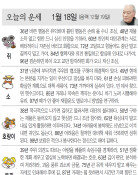‘Sea, Cranes and Peaches’ to be displayed in Korea
‘Sea, Cranes and Peaches’ to be displayed in Korea
Posted December. 04, 2020 07:43,
Updated December. 04, 2020 07:43

“Sea, Cranes and Peaches,” a Korean folding screen owned by the Dayton Art Institute in Ohio, the U.S., will be displayed at the National Palace Museum of Korea in Seoul’s Jongno District from Friday through January 10, 2021, before being sent back to the United States after 16 months of restoration. The panel screen was brought to South Korea for restoration through an agreement between the Overseas Cultural Heritage Foundation and the Dayton Art Institute in July 2019.
The sea, cranes and peaches - three out of the 10 symbols of longevity – were popular subjects in court paintings in the late Joseon Dynasty, and dozens of them were produced for various occasions including royal weddings. Peaches in these paintings grow only every 3,000 years and symbolizes longevity.
Measuring 244.5 centimeters in height and 780 centimeters in width, “Sea, Cranes and Peaches” is the largest in its size among the remaining 10 paintings. It was considered to be Japanese when it was donated to the Dayton Art Institute because of the use of gilt. It was not until 2017 when professor Kim Su-jin of Sungkyunkwan University and professor Misa of Kyoto Institute of Technology concluded that it was created in Korea between the late 19th century and the early 20th century.
The screen was purchased by Charles Goodrich in the 1920s to decorate his study and donated to the Dayton Art Institution after his death. The royal folding screen, which originally had 12 panels, was modified to have six panels, but the Overseas Cultural Heritage Foundation restored its original form in a project sponsored by the Cultural Heritage Administration and Korea Minting and Security Printing Corporation.
Min Kim kimmin@donga.com







